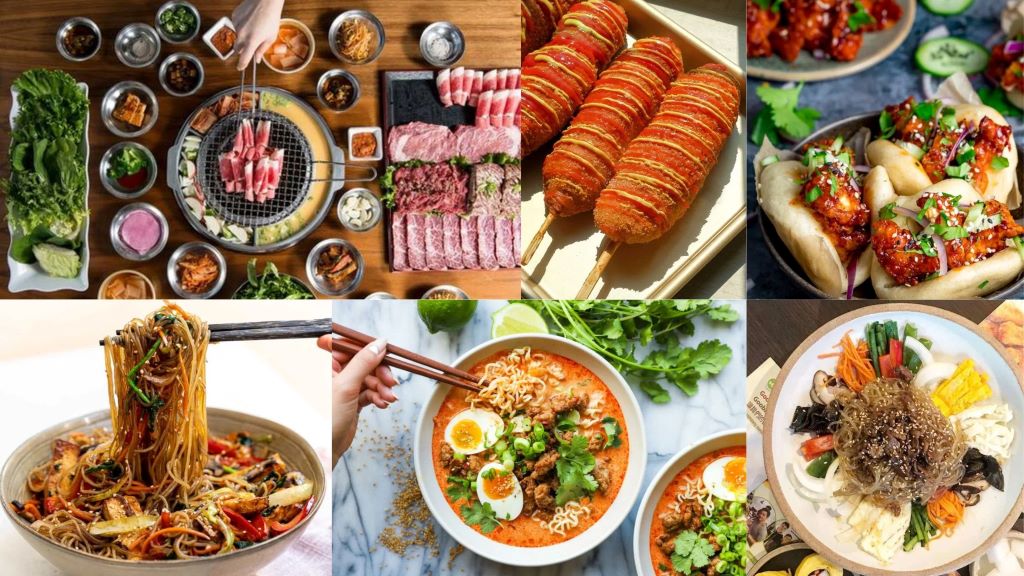Korean cuisine has taken the world by storm in recent years. Its vibrant flavors focus on fresh ingredients, and unique textures have captivated food enthusiasts everywhere. But beyond the now-ubiquitous kimchi and spicy chicken wings lies a world of culinary depth waiting to be explored.
This journey into Korean flavors starts with understanding the cornerstone ingredients and condiments that define the cuisine.
The Pillars of Korean Taste:
-
Gochujang: This fiery red chili paste is the heart and soul of Korean spice. Made with fermented soybeans, Korean chili flakes (gochugaru), rice, barley malt, and salt, gochujang offers a complex flavor profile that’s both spicy and slightly sweet. It adds a rich depth to stews, marinades, and dipping sauces like ssamjang, used for grilled meats.
-
Doenjang: The umami bomb of Korean cuisine, doenjang is a fermented soybean paste similar to Japanese miso. Its savory, slightly salty notes add complexity to soups like doenjang jjigae (soybean paste stew) and marinades for dishes like dubu jorim (braised tofu).
-
Sesame Oil: This fragrant oil, toasted from sesame seeds, adds a nutty aroma and richness to Korean dishes. A drizzle of sesame oil is a common finishing touch for everything from bibimbap to noodles to stir-fries.
-
Korean Soy Sauce (Gganjang): A staple condiment, Korean soy sauce is slightly sweeter and less salty than its Chinese counterpart. It’s used for dipping, marinades, and seasoning broths.
The Fermented Symphony:
Fermentation plays a crucial role in Korean cuisine, not just for preserving food but also for developing complex flavors. Kimchi, the most famous example, is a spicy and tangy fermented Napa cabbage seasoned with gochugaru, garlic, ginger, and Korean radish (daikon). Kimchi variations are endless, with different vegetables like cucumber or napa cabbage hearts used, and the level of spiciness varying widely.
Beyond kimchi, fermented soybean paste ( doenjang) and fermented seafood sauce (jeotgal) add umami depth to many dishes. These funky flavors might be unfamiliar to some palates, but they add a unique dimension to Korean cuisine.
A Journey Through Korean Dishes:
Now that we’ve explored the building blocks, let’s delve into some iconic Korean dishes:
-
Bulgogi: Thinly sliced marinated beef, typically grilled on a barbecue or in a pan, bulgogi is a crowd-pleaser. The marinade, usually containing soy sauce, gochujang, garlic, ginger, and sesame oil, infuses the meat with a sweet, savory, and slightly spicy flavor.
-
Bibimbap: This visually stunning dish translates to “mixed rice.” A bowl of fluffy white rice is topped with a variety of colorful and flavorful ingredients: seasoned vegetables, julienned omelet, marinated meat (optional), gochujang, and a fried egg. The beauty lies in mixing everything together, creating a symphony of textures and tastes in each bite.
-
Japchae: Glass noodles stir-fried with an assortment of vegetables, meat, and sometimes seafood, japchae is a delightful combination of chewy noodles, tender vegetables, and savory sauce. Often served at celebrations and holidays, japchae is a crowd-pleaser.
-
Sundubu Jjigae: This soft tofu stew is a comforting and flavorful dish. Silken tofu is simmered in a spicy broth flavored with gochujang, doenjang, vegetables, and sometimes seafood. It’s often served bubbling hot in a dolsot (stone pot), which keeps the stew warm for a long time.
Beyond the Classics:
Korean cuisine extends far beyond these well-known dishes. Korean pancakes (kimchi jeon, seafood pajeon), noodle soups (kalguksu, ramyeon), and royal court cuisine (yeonsik) offer a diverse culinary landscape to explore.
Essential Questions to Ask Before Investing in a Food Franchise: A Comprehensive Guide!
Korean Food Culture:
An essential part of the Korean dining experience is the communal aspect. Meals are often shared family-style, with numerous dishes served on the table for everyone to enjoy. Banchan, a variety of small side dishes like kimchi, pickled vegetables, and seasoned bean sprouts, accompany almost every meal.
Cooking Korean at Home:
Korean food is surprisingly approachable for home cooks. Most ingredients are readily available at Asian grocery stores or well-stocked supermarkets. With a basic pantry of gochujang, doenjang, sesame oil, soy sauce, and Korean chili flakes, you can create a variety of delicious dishes.
A Final Note:
Korean cuisine is an exciting adventure for the taste buds. With its bold flavors, focus on fresh ingredients, and unique textures, it offers something for everyone.







